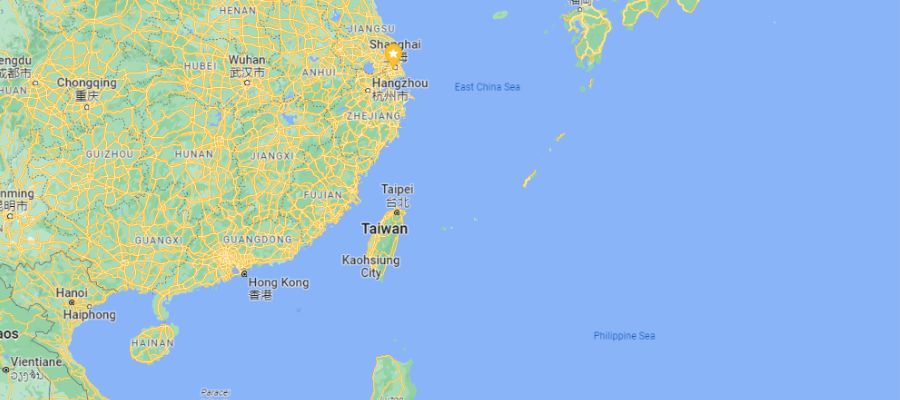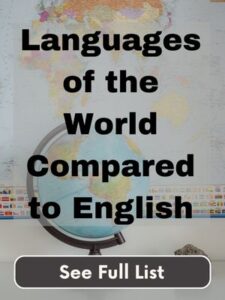Cantonese is a Chinese language that is spoken by around 60 million people worldwide, primarily in the Guangdong province of China, Hong Kong, Macau, and in Chinese communities around the world. It is a tonal language, with nine distinct tones that can change the meaning of words. You can imagine that this huge variety of tones influences Cantonese speech and language development and creates unique communication patterns for Cantonese children learning English.
The Cantonese language belongs to the Sino-Tibetan language family, which is one of the world’s largest language families, containing over 400 languages. Within the Sino-Tibetan family, Cantonese is classified as a part of the Yue Chinese subfamily, which also includes several other dialects spoken in Guangdong, Guangxi, and other regions of southern China.
In China, Cantonese is not an official language and is primarily spoken in Guangdong province, including its capital, Guangzhou. In Hong Kong and Macau, Cantonese is one of the official languages, alongside English and Portuguese, respectively. Cantonese is also spoken by Chinese communities in other parts of the world, including Canada, the United States, and Australia.
In the United States, Cantonese is spoken by a significant number of Chinese immigrants and their descendants. Many Cantonese speakers came to the United States in the mid-19th century, seeking work in the California Gold Rush and later in other industries. Cantonese has remained a popular language among Chinese immigrants, particularly in urban areas such as San Francisco and New York City, where there are large Chinese-American communities.

Interesting Facts About Cantonese Speech and Language Development
One interesting fact about Cantonese is that it has influenced the development of Chinese cuisine around the world. Many popular Chinese dishes, such as dim sum and wonton noodles, have their roots in Cantonese cuisine, which has a long history of using fresh ingredients and bold flavors. Cantonese cuisine is also famous for its use of various cooking techniques, such as stir-frying and steaming.
The Cantonese language uses a writing system based on Chinese characters, which are also used in other Chinese languages like Mandarin. However, Cantonese has its own unique set of colloquial characters, which are used in informal writing or when Cantonese-specific vocabulary is required. In Hong Kong, the government has introduced a system of romanization called the Hong Kong Government Cantonese Romanization system, which is used for official purposes.
Cantonese Speech Language Development
Cantonese Consonant Phonemes in Comparison to English
| Cantonese Consonants Not Shared with English | /pʰ/ /tʰ/ /kʰ/ /kʷ/ /kʷʰ /ts/ /tsʰ/ |
| Cantonese Consonants Shared With English | /p/ /t/ /k/ /m/ /ŋ/ /n/ /f/ /s/ /l/ /h/ /w/ /j/ |
| English Consonants Not Shared with Cantonese | /b/ /d/ /g/ /v/ /z/ /ʃ/ /ʒ/ /tʃ/ /dʒ/ /θ/ /ð/ /ɹ/ |
Cantonese Vowel Phonemes in Comparison to English
| Cantonese Vowels Not Shared with English | /iː/ /yː/ /uː/ /ɛː/ /œː/ /ɔː/ /aː/ /ɵ/ /ɐ/ |
| Cantonese Vowels Shared With English | /ɪ/ /ʊ/ /e/ /o/ |
| English Vowels Not Shared with Cantonese | /a/ /i/ /u/ /ɔ/ /ɛ/ /æ/ /ʌ/ /ə/ /ɚ/ |
The Use of Phonotactic Constraints in Cantonese Speakers
See the chart below for information about when phonological processes are suppressed in the development of Cantonese.
| Pattern | Suppressed by: | |
| Syllabic Patterns | Mandarin | English |
| Final Consonant Deletion | Age 2;6 | Age 3 |
| Substitution Patterns | ||
| Stopping | Age 3;6 | Age 3 |
| Fronting | Age 3;6 | Age 4 |
| Assimilation | Age 2;6 | Age 3 |
| Backing | Age 3;6 | Age 3 |
| Deaffrication | Age 3;6 | NA |
| Deaspiration | Age 4;0 | NA |
| Delabialization | Age 4;6 | NA |
* Based on the work of To, Cheung, & McLeod (2013) (Cantonese) and Shriberg (English).
DEVELOPMENTAL NORMS FOR SPEECH (age of acquisition, 90% mastery)
| Age | Consonant Phonemes |
| 1;6-2;0 | /p, j, t, n/ |
| 2;1-2;6 | /m, n, w, ŋ/ |
| 2;7-3;0 | /h, k/ |
| 3;0-3;6 | / pʰ, tʰ, kʰ, l/ |
| 3;6-4;0 | / kʷ, f, ts, s/ |
| 4;0-4;9 | /tsʰ, kʷʰ/ |
(based on So & Dodd, 1995; Stokes & Wong, 2002)
Language Specific Differences Between English and Cantonese
- Cantonese is a tonal language. There are 9 tones. The last three tones are very similar to the first, third and sixth tones except that they have a shorter duration. Tones are phonemic. In other words, they mean different things even when the same consonant-vowel combination is uses. The tones are described as high falling, medium rising, medium level, low falling, low rising, low level.
- Now, we have to talk a bit about language differences, too. This following table highlights a few of the linguistic differences between Cantonese and English. These differences help you to know what language influence errors you might see. And remember, if the errors result from an influence from the other language, we don’t have to worry. That is a normal part of learning a second language.
| Feature | Cantonese | English | Possible Errors |
|---|---|---|---|
| Pronouns | No gender used with pronouns | Gender used with pronouns (e.g., he, she, him, her) | Incorrect gender use of pronouns (e.g. “He” for “She.” |
| Plurals | Nouns are not marked for plurality | Add “s” to nouns | Four dog* |
| Articles | No articles | Use of definite (the) and indefinite (a, an) articles | Jen want pen*/Jen wants the pen |
| Tense | Verbs are not modified for tense | Verbs are modified for tense | Sally jump* |
| Word order | Usually Subject-Verb-Object but Cantonese is a topic-prominent language | Strict Subject-Verb-Object | This cloth I have touched*/I have touched this cloth. |
Sources
So, L. K., & Dodd, B. J. (1995). The acquisition of phonology by Cantonese-speaking children. Journal of Child Language, 22 (3), 473-495.
Stokes, S. F., & Wong, I. M. (2002). Vowel and diphthong development in Cantonese-speaking children. Clinical Linguistics & Phonetics, 16 (8), 597-617.
To, C. K. S., Cheung, P. S. P., & McLeod, S. (2013). A population study of children’s acquisition of Hong Kong Cantonese consonants, vowels, and tones. Journal of Speech, Language, Hearing Research, 56 (1), 103-122.



